

For the pragmatic Hakka people, the focus of eating lies in the nutritional value and fulfillment. The ingredients are sourced locally as much as possible, with mainly vegetables and not so much seafood. The main cooking methods are steaming, stewing, and slow-cooking in order to keep the original flavor of the food. "Savory, aromatic, and fatty" are the key features of Hakka cuisine. In addition to being appetizing, the food can also supplement the salt needed after a day of intense labor. Hakka food culture is closely related to their ethnic characteristics of being diligent and hard-working, giving Hakka cuisine its unique charm.
The "four braised and four stir-fried dishes" are the most representative Hakka dishes. In addition to being savory and aromatic, they are easy to preserve and make full use of the ingredients without wasting a single bit of them. The four braised dishes are braised pig stomach with pickled mustard leaf, braised pork belly, braised pork ribs with radish, and braised dried bamboo shoots in fatty soup. The four stir-fried dishes are Hakka stir-fry, stir-fried chitlins with ginger, stir-fried duck blood with chives, and stir-fried pig lung with pineapple and black fungus. These eight dishes are not only served to guests at a banquet, but also classic must-tries at Hakka restaurants.
※The more common of the eight dishes are described in detail below.
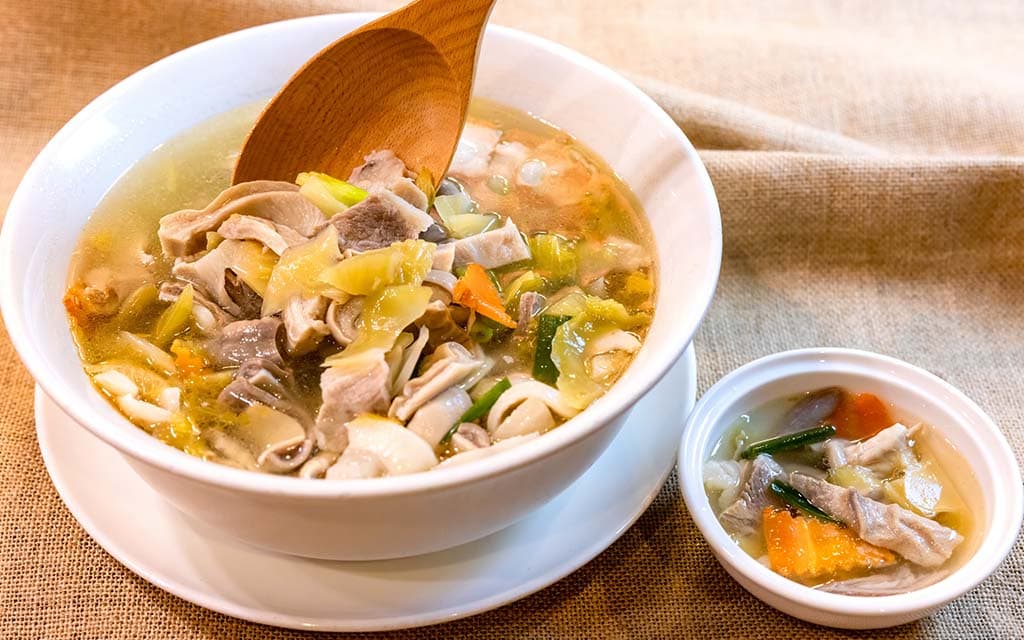
Hakka people cook pickled mustard leaf and pig stomach together so that the sourness of the pickled vegetable neutralizes the grease and unpleasant smell of the pork. It is a match made in heaven. The long simmering makes the pig stomach soft and tender, and the pickled mustard leaf adds a crunchiness to the texture. It is a classic soup dish with a mellow and smooth taste.

Select pork belly with moderate fat content, add soy sauce and rice wine, and let it simmer for a long time on low heat. When the meat has absorbed all the flavor of the sauce and can be easily poked through it with a chopstick, the savory and aromatic braised pork belly that will melt in your mouth is ready to be served.
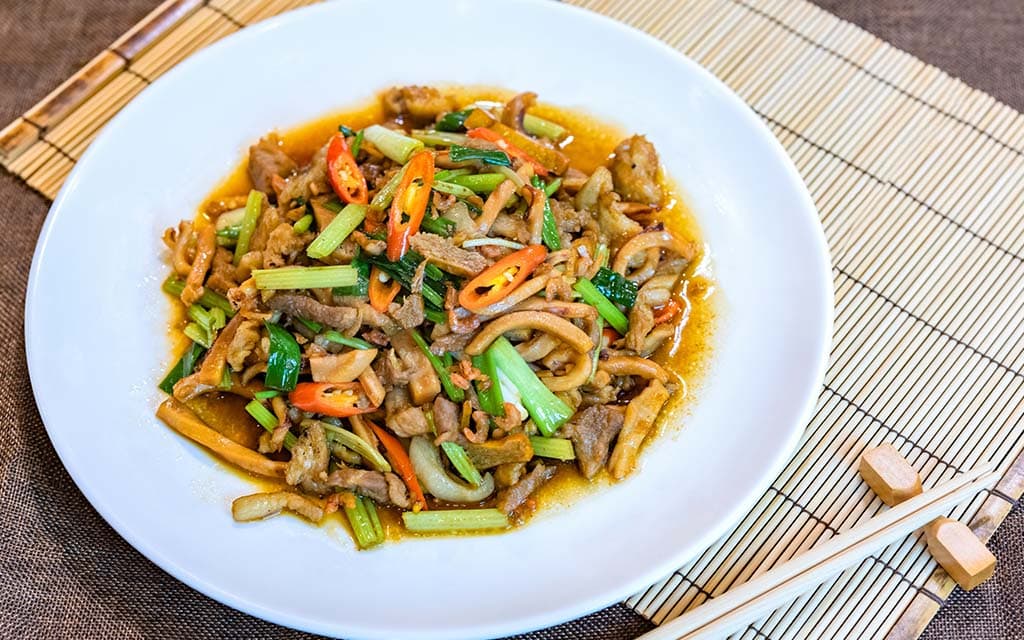
This famous Hakka dish is made by stir-frying strips of pork belly, dried squid, and dried tofu on high heat. The taste of the ingredients combined with spices such as peppers, green onions, and celery make this dish rich and unique in flavors. It is highly suitable as an appetizer that goes with alcoholic drinks.
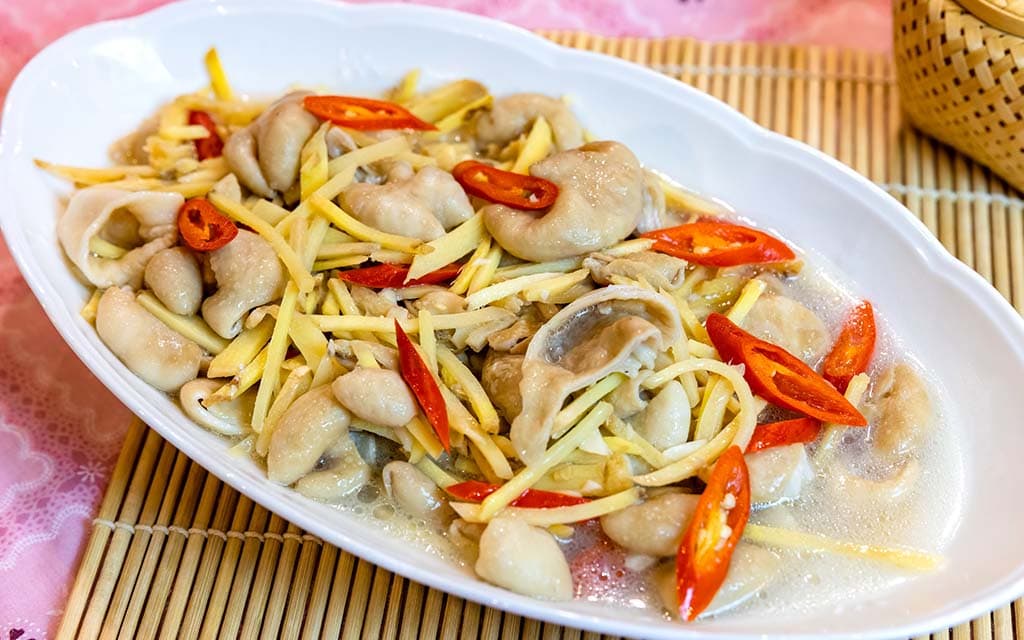
Chop young ginger into matchsticks and sauté until fragrant, then stir-fry with pig intestines in a hot pan. Adding vinegar right before taking the food out of the pan is a key point. It not only makes this dish tart and refreshing, but also softens the toughness of the intestines. This is a mouth-watering, representative Hakka dish.
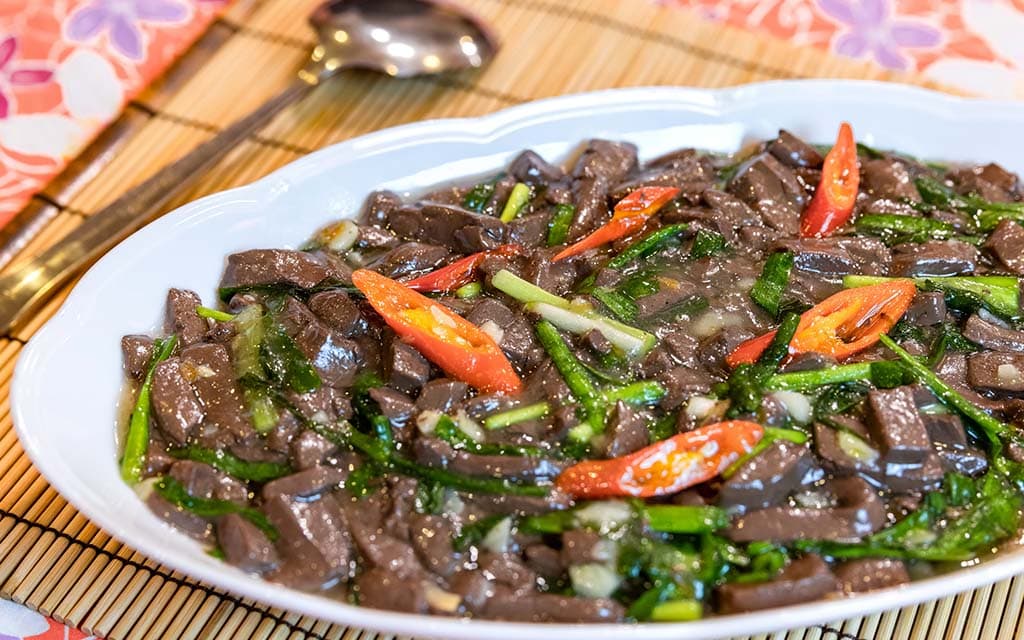
Duck blood and chives are common and inexpensive ingredients. Quickly stir-fry them in a pan, and add basic seasoning such as salt, soy sauce, and rice wine, you will get this simple yet tasty Hakka stir-fried dish with bright colors and rich flavors.
Hakka society is primarily agricultural. They grow rice to make a living and rice is their staple food. In addition to eating steamed rice, they also grind rice with water into a pulp, and make various rice-based food with it, which are called "ban." Ban made from glutinous rice or long grain rice can be savory or sweet. It needs to be steamed until well done before it can be preserved. Ban is not only filling but also easy to bring to work, placing it in an important spot in the Hakka food culture.
Hakka people are devoted worshipers of the gods and ancestors. In the time of resource scarcity, ban is not only a daily snack, but also the most important ceremonial food in various religious celebrations. Through dedicating ban to gods and ancestors, Hakka people ask for blessings from them. There are so many different types of Hakka ban, such that on different occasions, there are specific rules which ban is suitable. Let us learn about these customs in the next section.

Sweet cake, Fa cake, Red bean sweet cake, Radish cake, Hakka vegetable buns

Ban-yuan, Hakka vegetable buns

Chinese mugwort rice, cake, Fa cake

Ciba (rice cake), Red rice cake

Flat rice noodles, Savory rice pudding, Mishaimu, Niuwenshui
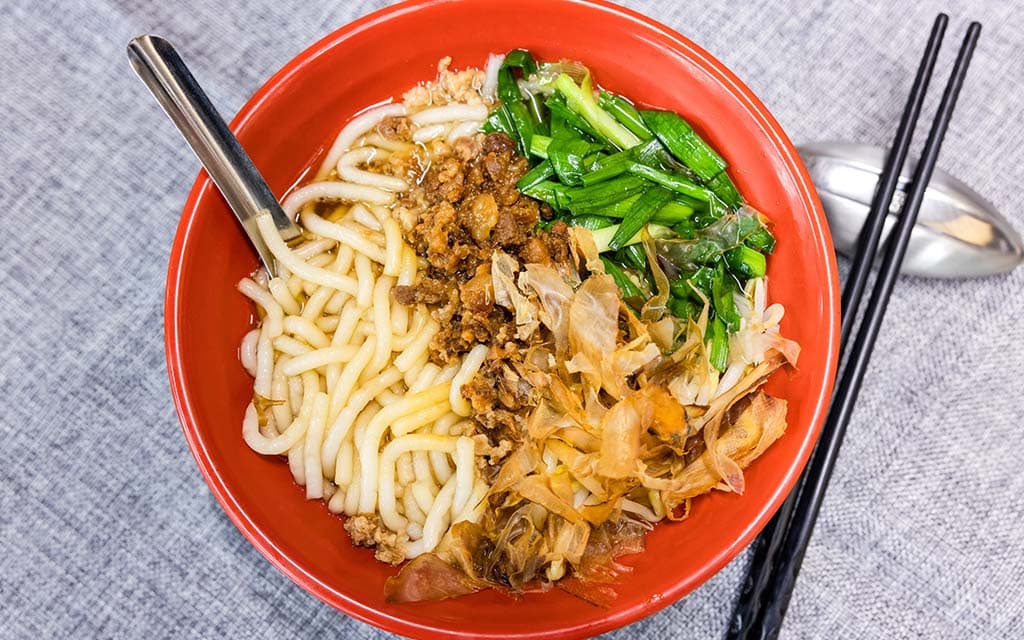
Mishaimu is commonly known as Mitaimu. The smooth, soft, and bouncy texture will make you take one bite after another. It is suitable as a sweet or savory dish. With syrup and shaved ice, sweet Mishaimu is a summer dessert that cools you down. With meat sauce and fried shallots, savory Mishaimu is also delicious.
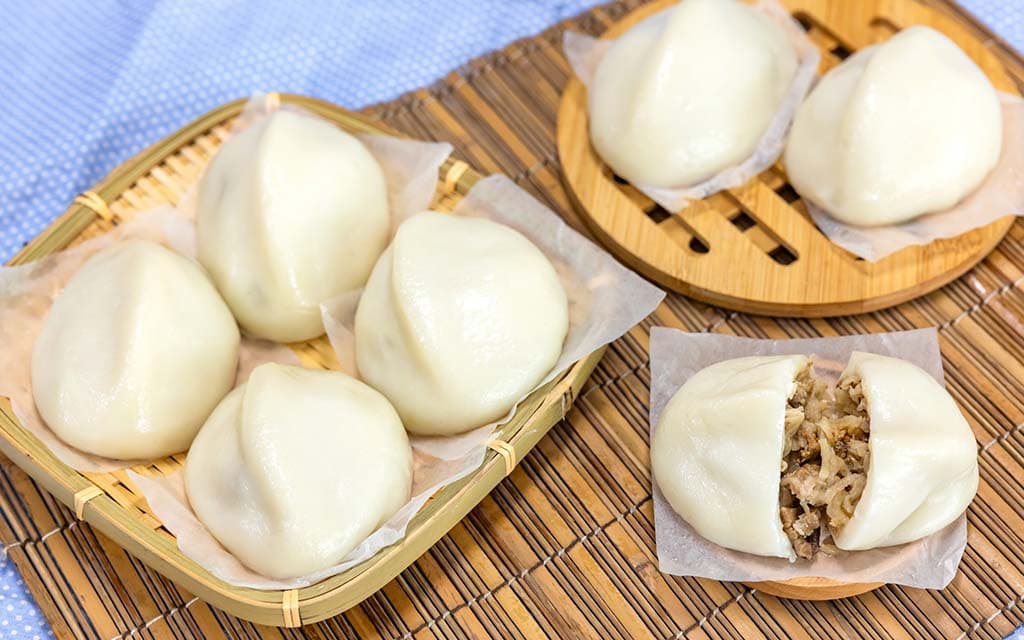
Wrapping fried radish shreds, mushrooms, fried shallots, small dried shrimp with a glutinous rice dough to make vegetable buns with rich fillings. It is a must-have delicacy during Chinese New Year and major festivals, dedicated to ancestors and gods for blessings of peace and good fortunes.
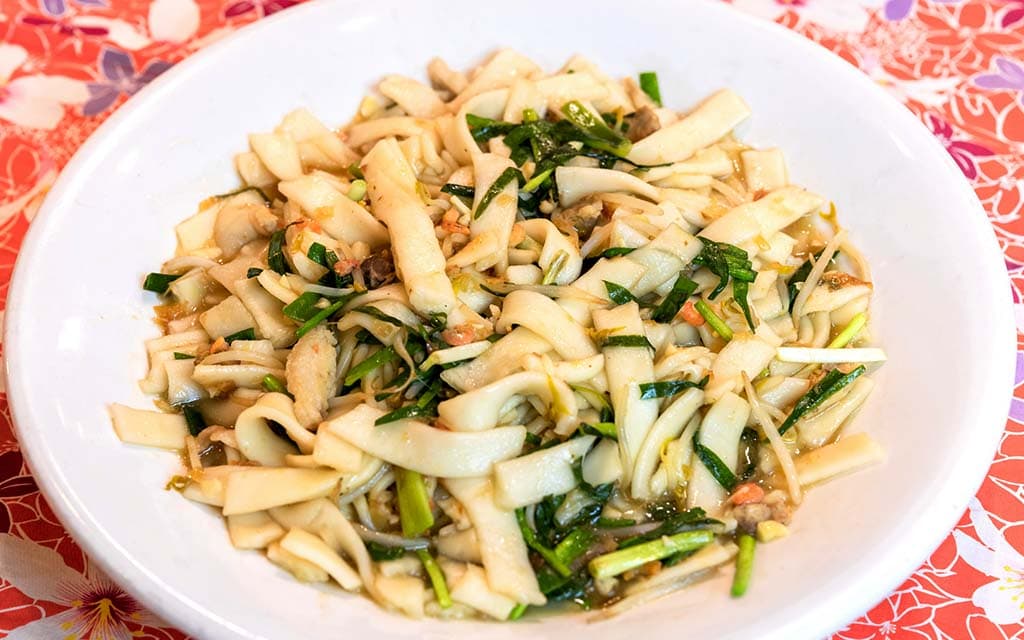
Flat rice noodle is a representative Hakka rice food. It is smooth and fulfilling. Flat rice noodles in soup are made with broth, chives, and bean sprouts. Stir-fried flat rice noodles are made with fried shallots and dried shrimp. They are both delicious and common ways to enjoy flat rice noodles.
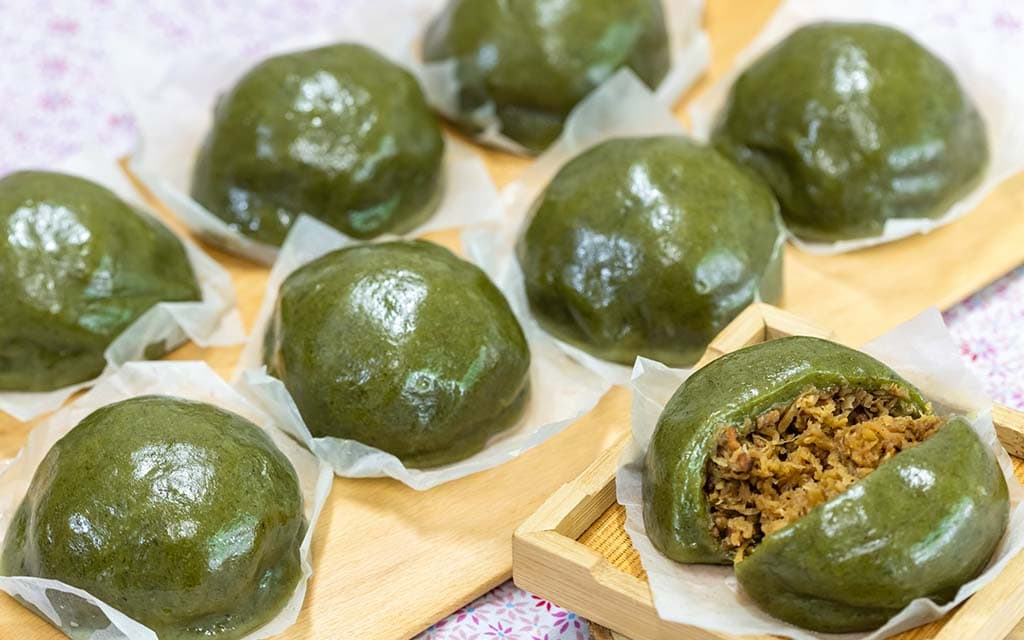
The green rice cake is made by mixing Chinese mugwort in the rice pulp. If a different plant is used, the end product gets a different name. Traditionally, Hakka people believed that eating green rice cake during Qingming time, which is when summer heat is about to begin, has the health benefit of removing dampness, detoxing, and replenishing Qi (energy).
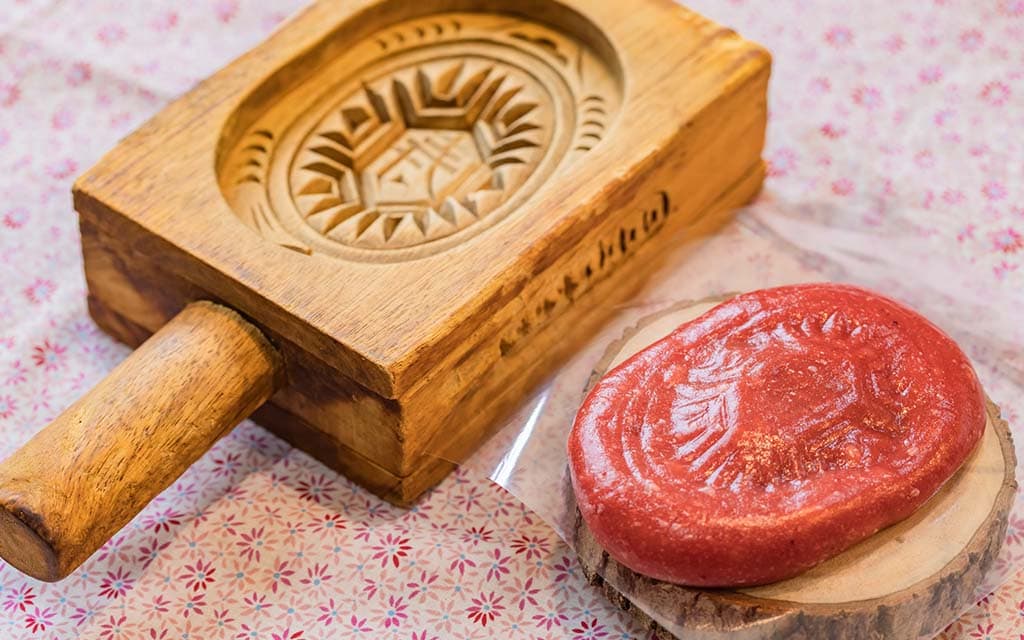
The red cakes are very festive. The tortoise shell pattern on top symbolizes good luck and longevity. The filling is usually sweet red bean paste. The red cakes are usually offerings to gods on celebrative occasions such as weddings, the celebration of a newborn son, or the birthday of a senior. In addition to praying to the gods for happiness and completeness of life, they also help share the joy with family and friends.
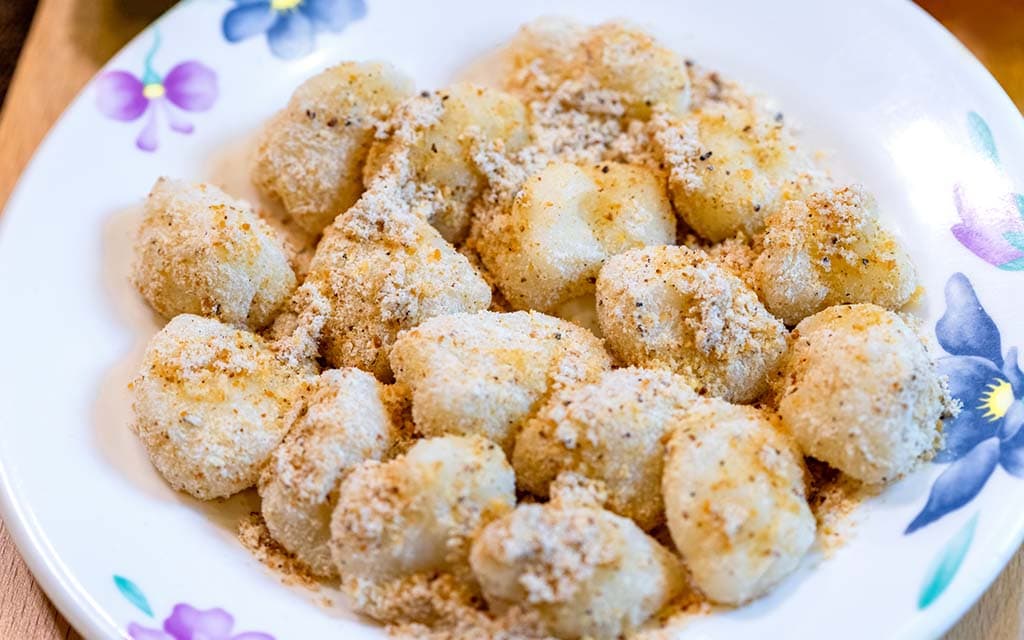
The Hakka Ciba is commonly known as mochi. Made by beating glutinous rice with a pestle in a mortar until sticky, it is very tasty and soft. Unlike the typical mochi with fillings, Hakka Ciba is served covered in grated peanut sugar. The ingredients are simple, and the making is easy. It is a traditional snack that often appears on daily occasions as well as on formal banquets.
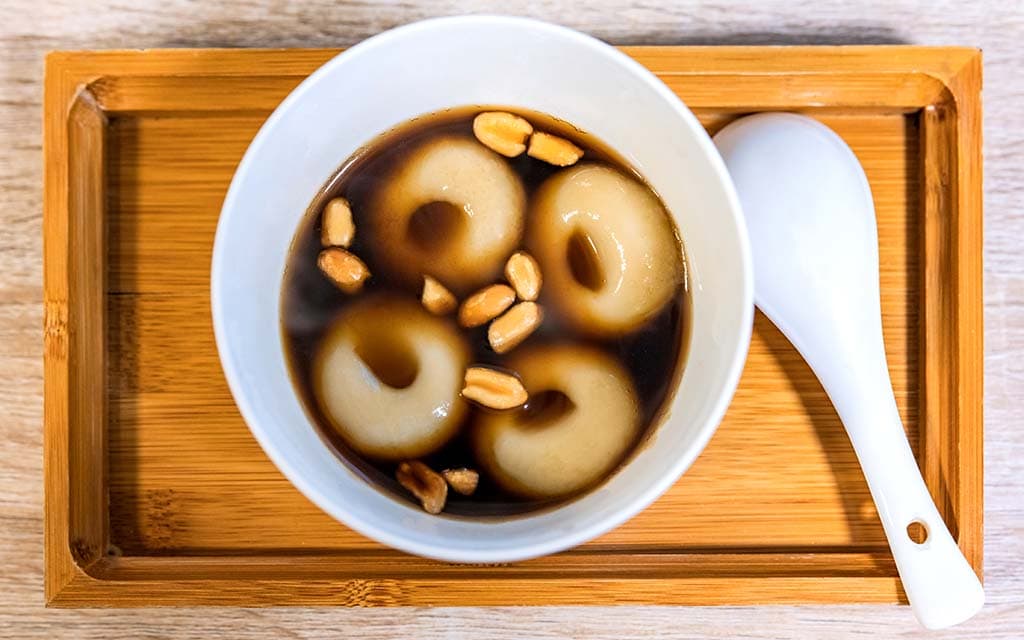
Niuwenshui is a traditional snack eaten by Hakka people during breaks working in the field. It is so named because it looks like a buffalo soaked in water. Although it is technically a kind of Ciba, the texture is bouncier than the typical Ciba because of how it is made and eaten. After cooling, not only will it not harden, the taste actually becomes better. You can eat it with brown sugar ginger syrup, peanuts, and sesame seeds, and the flavor is just excellent.
Frugality and avoiding wastefulness are Hakka habits. In the old days, they lived in poverty. To make sure there is enough food throughout the year, they developed methods of preserving food such as pickling, drying, and “Qu” (a type of fermentation). Because of the hard work in farming, Hakka people make good use of pickled food in cooking. In addition to adding flavors, pickled food can also replenish the lost salt and help maintain physical strength. In sum, pickled food is very important wisdom of life for Hakka people.
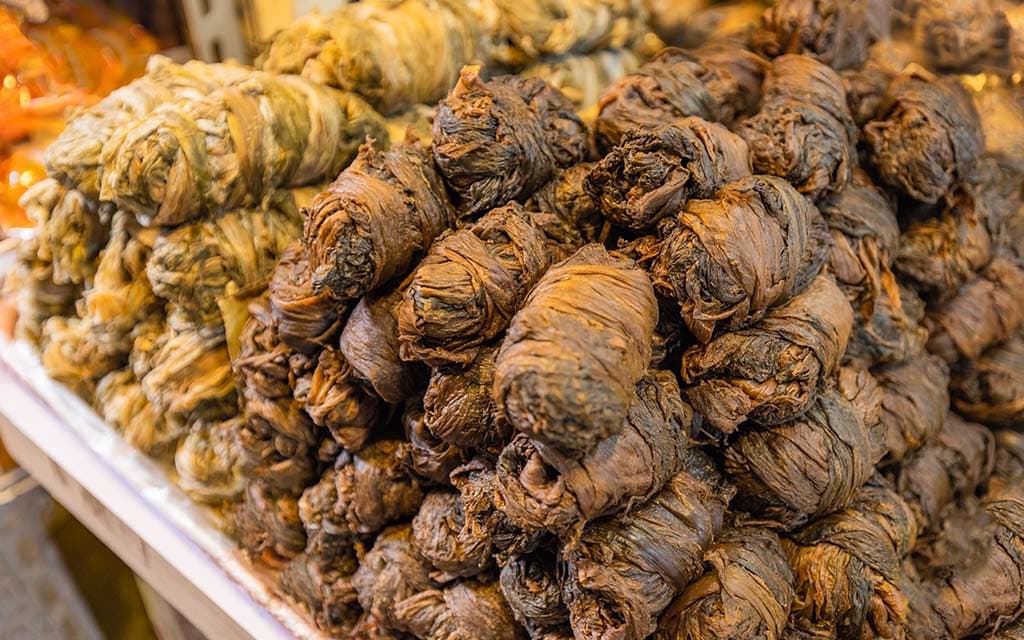
Since vegetables have a fixed harvest period, to have vegetables all year round, they must be pickled and preserved. After harvesting the vegetables, dry them in the sun, and then add salt to make pickled products. This is the most common food preserving method. Varying on the level of drying, the type of vegetables, and the processing methods, Hakka people have a wide variety of pickled delicacies, such as pickled mustard leaf, dried pickled mustard leaf, dried radish, pickled radish, dried cabbage, dried bamboo shoots, and fermented bean curd.
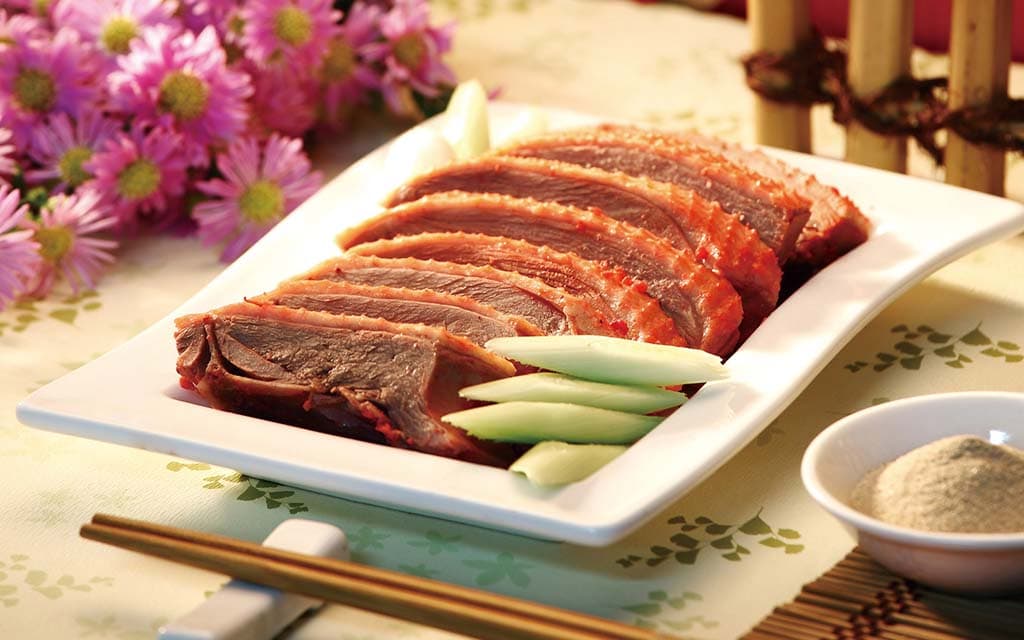
In the days of poverty and hardship, Hakka people only had fresh fish and meat during festivals and feasts. During usual times, Hakka people would use the methods of “Feng” and “Qu” to preserve meat. These two methods can make the cooked meat last longer to avoid wastefulness if they cannot be consumed in one meal. Feng is about sealing the meat in a container and cook it on low heat until soft; while Qu is about using a rice mold (Monascus purpureu) to marinate the meat. It is different from simply marinating in salt and adds an elegant wine aroma to the meat.
/ Photo credit: Hsinchu County Government